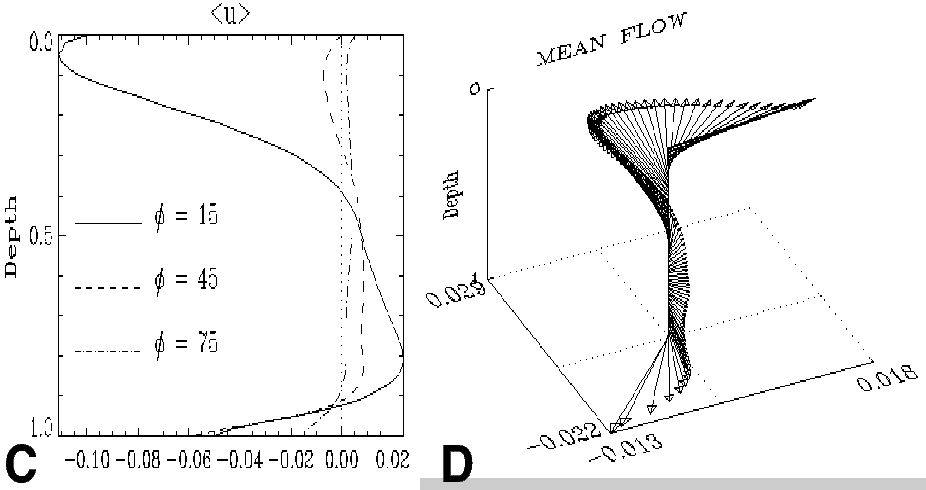

We have studied highly turbulent compressible convection influenced by rotation within local f-plane models, dealing with a perfect gas in a rectilinear Cartesian slab geometry positioned tangentially to the rotating sphere at some latitude phi. Such 3-D local models are an important complement to the full spherical shell studies, for they afford a higher spatial resolution and thus can attain more intensely turbulent flows. We have examined the basic features of fully-developed compressible turbulence with special regard to the types of flow structures, topologies, mean-flow generation and energy balances that may be achieved (Toomre & Brummell 1995; Brummell, Cattaneo & Toomre 1995; Brummell, Hurlburt & Toomre 1993, 1996, 1998).

In such turbulent compressible simulations, the motions near the upper surface involve a roughly polygonal cellular network of warm upflows near the cell centers and cool and narrow downflows at their periphery, as shown in the perspective view of vertical velocities in Figure 1a for a simulation positioned at the mid latitude of phi = 45 degs ; the deeper interior of the layer is fully turbulent. The relatively strong downflows formed at the interstices of the upper network extend throughout the full layer depth (which spans multiple density scale heights), carry significant vorticity, and are spatially and temporally coherent for many turnover times of the interior turbulence. It is quite remarkable that such coherent structures can persist amidst the buffeting by the randomly-oriented vortex tubes present at greater depths as can be seen in a volume rendering of enstrophy (vorticity squared) shown in Figure 1b. Rotational constraints imposed by Coriolis forces can lead to coherent downflow vortices that tend to align with the rotation vector, which at most latitudes is tilted away from the vertical. Such a turbulent alignment mechanism has a crucial role in driving mean zonal (east-west) and meridional (north-south) flows which coexist with the turbulent convection. These mean flows are driven dominantly by the Reynolds stresses generated in these coherent structures. The resulting mean zonal flows have the interesting property that they are nearly independent of depth over much of the interior of the layer (Figure 1c), somewhat in keeping with the near constancy of the angular velocity Omega on radial lines within the convection zone as deduced from helioseismology. These nearly constant mean zonal flows vary in their magnitude with latitude, and even the overall mean flow spirals with depth, much in the spirit of recent helioseismic assessments (the latter based on ring-diagram analyses: Patron et al. 1995, Thompson et al. 1996, Haber et al. 1998).

The mechanisms revealed by such highly turbulent simulations in local f-plane domains are only seen in the highest resolution ASH spherical shell simulations -- coherent structures and their alignment with the rotation are just beginning to emerge in the global simulations. The guidance of the local models then leads us to expect that the resulting Reynolds stresses and therefore the generated mean flows and differential rotation will continue to change to the turbulent paradigm, as the degree of turbulence (and the resolution) is increased, offering the possibility of closer agreement with observed rotation profiles of the sun.
This page prepared by Nic Brummell, Laboratory for Computational Dynamics, University of Colorado.